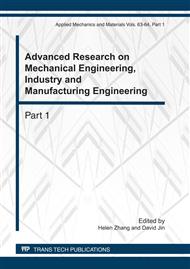p.655
p.659
p.664
p.668
p.673
p.678
p.682
p.686
p.690
A Theoretical Study on the Transfer Impedance of a Plane Current Probe
Abstract:
This paper theoretically analyzes the transfer impedance of a plane current probe. The plane current probe is an effective device that is used to measure conducted current flowing on the surface of a metal structure. One of the hot topics for plane current probe is to obtain its transfer impedance. Most research concentrates on designing calibration devices and measuring the values of the transfer impedance. However, they all do not carry out theoretical study on transfer impedance. In this paper, the equivalent circuit of the signal detection system of the probe was established based on a transformer model. Furthermore, the expression of transfer impedance was derived from the equivalent circuit. The curve shape of transfer impedance obtained from this study has a good agreement with the measured ones. This fact validates the equivalent circuit and the theoretical formula. Subsequently, influence on the value of transfer impedance was analyzed based on the expression with change of some parameters, e.g., turns of coil winding, dimension of ferrite core, permeability of ferrite core, distributed capacitance. The result gained from the above analysis will provide guidance on the design and application of the plane current probe.
Info:
Periodical:
Pages:
673-677
Citation:
Online since:
June 2011
Authors:
Price:
Сopyright:
© 2011 Trans Tech Publications Ltd. All Rights Reserved
Share:
Citation:


